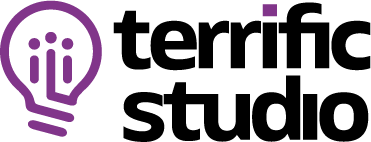Hick's law and how to improve conversion rate:
Imagine strolling through a grocery store, searching for that perfect jar of jelly to complement your morning toast. You turn a corner and find yourself faced with two enticing jelly tasting booths. One boasts a staggering array of 24 delectable flavors, while the other offers a more modest selection of just 6. Which booth do you think attracted more attention from curious shoppers and which one had a better conversion rate? and how to improve conversion rate?
The booth featuring an extensive assortment of 24 flavors undeniably drew more people. However, the real surprise lay in the numbers of those who actually made a choice and purchased the product. Here’s a breakdown of the conversions:
24 flavors: A mere 3% of visitors converted into buyers.
6 flavors: A staggering 30% of visitors made a purchase.
This experiment was carried out by two psychologists to unravel the intricate relationship between the number of choices presented to customers and their purchasing decisions. The conclusion was clear: customers exposed to a limited set of options were significantly more likely to make a purchase compared to those overwhelmed by a plethora of choices. This cognitive phenomenon is known as Hick’s Law which is directly tied to how to improve conversion rate.
The Essence of Hick’s Law:
According to this principle, as the number of choices increases, so does the time it takes for a person to make a decision, leading to what is commonly referred to as “choice overload” or “decision paralysis.” When faced with numerous options, people may take longer to make a decision, make less informed choices, or even abandon the decision-making process altogether.
Practical Applications for your Product:
Here are 6 practical applications on how to improve conversion rate by applying Hick’s Law when creating and commercializing your digital product:
1. Progressive Product Information:
Suppose you have a comprehensive software application with a wide range of features and functionalities. Instead of bombarding users with a plethora of options right from the start, consider a progressive approach. During the onboarding process, introduce users to the core features that align with their immediate needs or objectives. As they become more comfortable with the basics, we gradually expose them to advanced features through tooltips, in-app tutorials, or guided product tours. This gradual approach helps users build confidence in using your product without feeling overwhelmed by choices.
2. Recommended Product Features:
Imagine you run a subscription-based SaaS platform with multiple pricing tiers and feature sets. Highlight a recommended pricing plan or feature package based on user preferences or common use cases. By prominently showcasing this option, you simplify the decision-making process for potential customers. Amazon’s “Frequently Bought Together” and “Customers Who Bought This Also Bought” sections are great examples of recommending products based on user behavior, guiding customers towards informed choices.
3. Simplified Navigation Menus:
Let’s say you operate a website offering various categories of content or products. Opt for a clean and concise navigation menu. Reduce the number of menu items by grouping related sections together. Implement clear labels and, if necessary, use dropdown menus to provide access to subcategories or additional options. Cluttered or confusing navigation can lead to user frustration and abandonment, so keeping it simple and intuitive is essential.
4. Curated Product Listings:
If you manage an e-commerce website with an extensive product catalog, display a manageable number of products per page, and include filtering and sorting options like price range, product type, or customer ratings. Implement predictive search functionality that offers real-time suggestions as users type their queries, allowing them to refine their choices effortlessly. Additionally, feature sections like “Top Picks” or “Editor’s Choices” to direct users towards popular or highly-rated products, reducing the cognitive load associated with browsing a vast selection.
5. Clear Call to Actions (CTAs):
In your email marketing campaigns, focus on a single, compelling call to action (CTA). Whether you want recipients to visit a product page, subscribe to a newsletter, or download an ebook, a clear and straightforward CTA leaves no room for confusion. Use persuasive language and visually distinct buttons or links to guide users towards the desired action. Overloading an email with multiple CTAs can lead to decision fatigue and decreased click-through rates as well as a lower conversion rate.
6. Interactive Decision Trees:
Suppose you offer customer support through a chatbot on your website. Design your chatbot to act as an interactive decision tree, helping users navigate to the most relevant information or support options based on their specific queries or issues. By asking a series of guided questions, the chatbot can efficiently route users to the appropriate resources, FAQs, or even initiate live chat support when necessary. This approach streamlines the support process, reducing the cognitive effort required to find solutions and leading to better conversion rate.
Balancing Choice and Simplicity:
While Hick’s Law emphasizes the importance of simplicity, it doesn’t advocate for limiting choices to the point of frustration. Finding the right equilibrium between choice and simplicity is akin to the Goldilocks principle: not too much, not too little, but just right. Achieving this balance is crucial for your business if you aim to create a user-friendly and effective product experience. Here are 3 ways to create that balance:
1. Provide Meaningful Options Through Research:
Offering too few options can be equally detrimental. Customers may feel constrained and believe that none of the available choices align with their specific needs or preferences. In this scenario, they might abandon the product altogether, seeking alternatives that better cater to their requirements. By conducting good customer research, you can understand their needs and preferences, and provide them with the best options.
2. Highlight Recommendations:
One effective strategy for achieving balance is to emphasize recommended options or top picks. These selections serve as a starting point for users, providing a sense of direction amidst a sea of choices. Recommendations can be based on user behavior, popular selections, or best-sellers, offering customers a curated starting point.
3. Continuous Testing and Optimization:
The quest for balance doesn’t end with the initial design. Continuously test and optimize your digital product. A/B testing, heat maps, and user journey analysis can help identify areas where improvements can be made.
Balancing choice and simplicity in product discovery, development, and go-to-market is an ongoing journey. It requires a deep understanding of your audience, a commitment to user-centered design, and a willingness to adapt and refine your strategies based on real user experiences and feedback. By applying the principle across various domains, your business can enhance user experiences, boost conversions, and ultimately thrive in a world where choices abound.
At Terrific Studio you can be confident that your product will resonate with your target audience and drive revenue for your business. Book a free call to learn more about how we can work with you and take your business to the next level.








